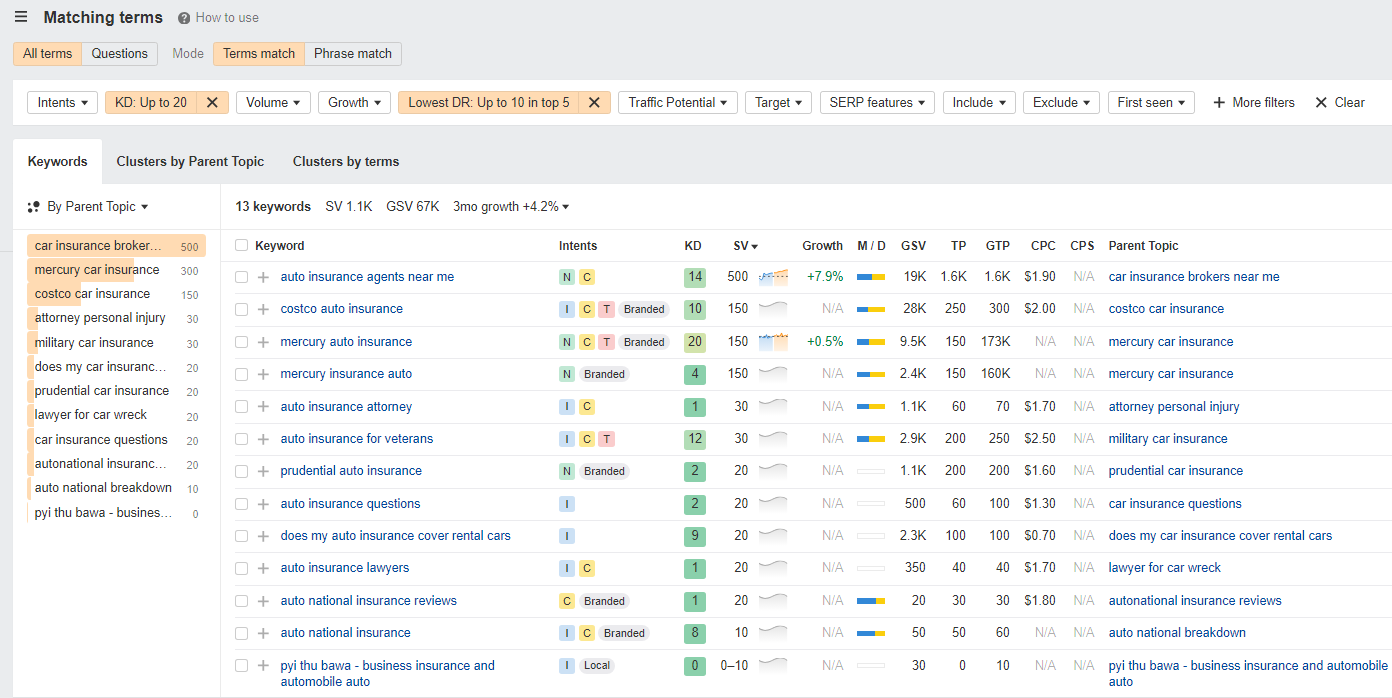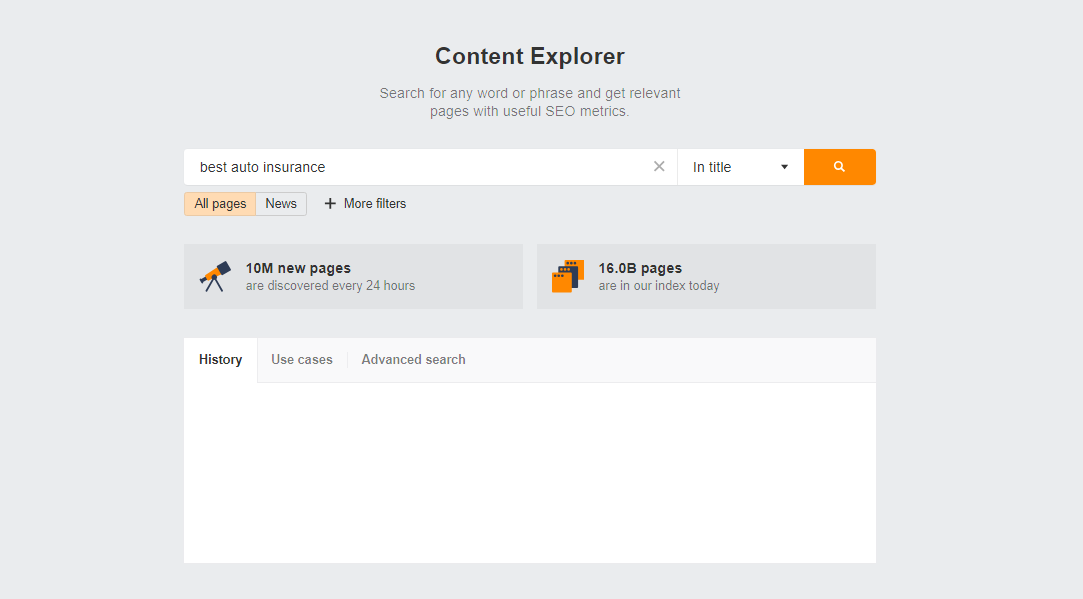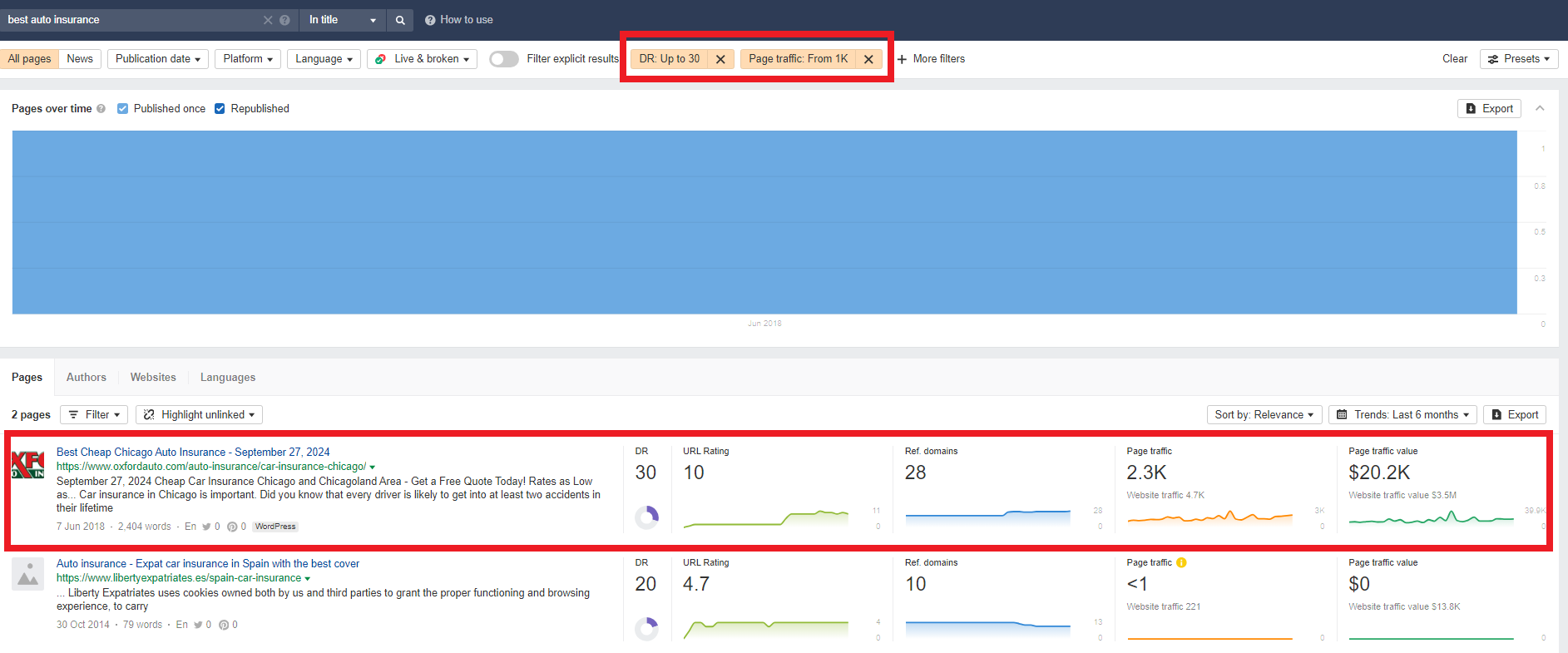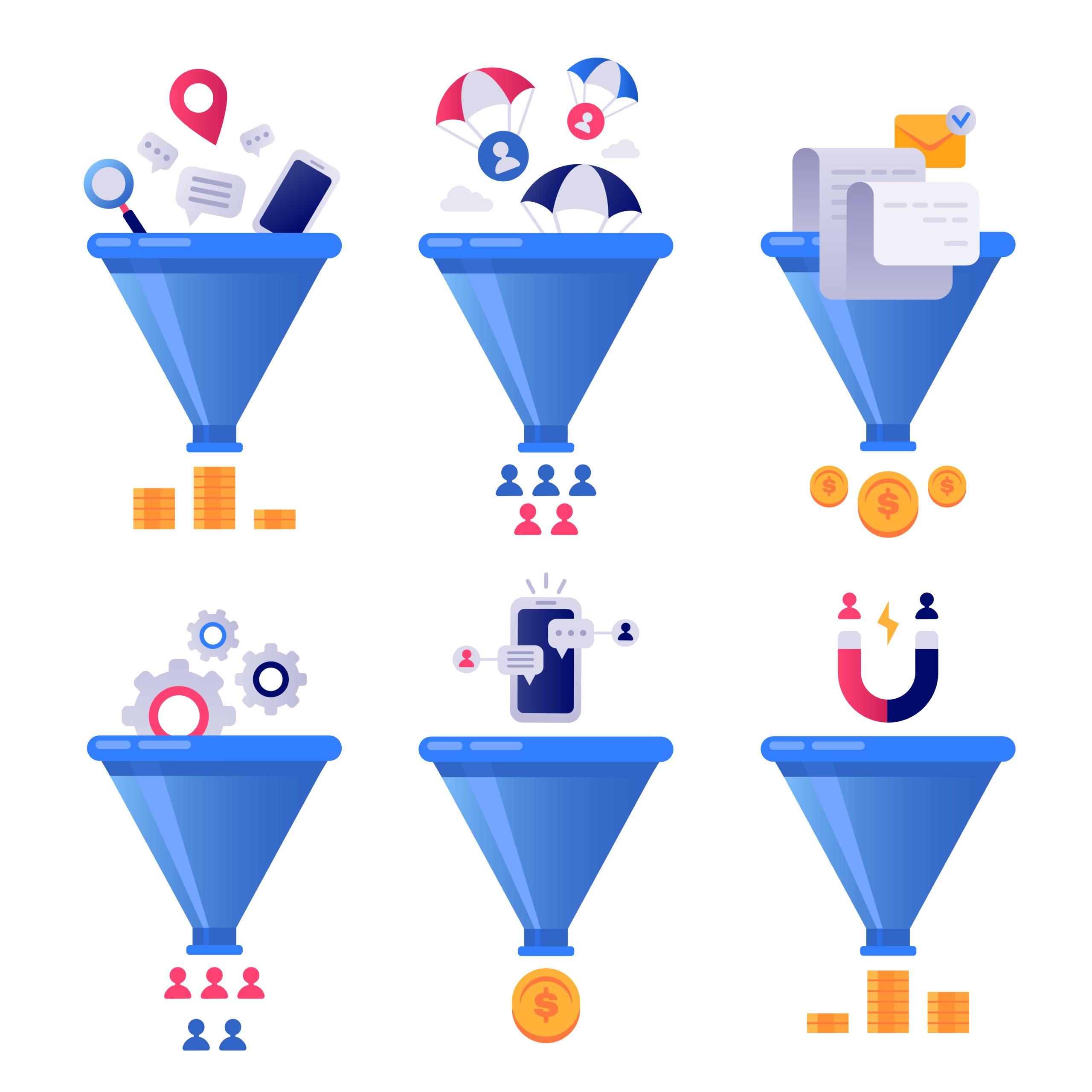How To Find an Affiliate Program that Pays
25-10-2024

Your Best Guide To Choosing Affiliate Programs
As an affiliate, you must constantly look for ways to grow your income – sell more leads at a higher price – and strengthen your position in the niche. And there’s one surefire way to take it to the next level: choosing a reliable high-ticket affiliate program with a large pool of advertisers.
But it’s easier said than done.
The ever-growing digital playground is rife with affiliate programs that offer exorbitant payouts…and then you cannot sell your leads quickly at the target price.
This is why I’ve come up with this guide, distilling years of experience into a few tight-packed paragraphs that walk you through the winning algorithm of choosing the best affiliate program.
How To Choose an Affiliate Marketing Program
If your website generates some traffic – say, 1000 monthly visitors – you can easily enrol in a beginner affiliate program. And even if you barely generate any traffic, you can find affiliate marketing programs that accept you.
But then again, it’s not about getting accepted to an affiliate program but rather converting your traffic into sales. For this, you must choose the right affiliate program from the get-go – or diversify into one if you already participate in one or several affiliate programs.
Step 1 – Select the Best Payout Model for Your Business
Arguably, the most important parameter of any affiliate program is its payment model: pay per click, pay per lead, or pay per sale. If you’re dedicated, you might also find more exotic payment models – pay per install, pay per download, etc. – but those are rare and limit your choice.
All things being equal, choose between these payment models:
Pay Per Click
If you’re unsure about the quality of your leads or whether they have a good conversion potential – or if that’s the only payment model supported by an otherwise perfect affiliate program – you can choose the pay-per-click payment model, receiving a commission for every click on your affiliate links.
However, the per-click commission is hundreds of times lower than per-lead and per-sale commissions because clickers are farther away from actual sales. That said, you don’t rely on the advertiser’s sales skills, and it’s easier to earn commissions.
Pay Per Lead
Pay per lead might be the best commission model for medium-level affiliates because you don’t have to rely on the advertiser’s sales skills. Likewise, per-lead commissions may reach hundreds of dollars in high-ticket industries like insurance, finance, and home services.
The only limitation with pay-per-lead is that you cannot receive large payouts overnight, whereas with the pay-per-sale model, you have this chance.
Pay Per Sale
Receiving commissions on sales makes you dependent on your advertiser while you still must generate purchase-ready leads. The pay-per-sale payment model is the hardest for aspiring affiliates, but the commission size might reach thousands of dollars on a single sale.
Step 2 – Calculate the Minimum Sustainable Payout
After you’ve chosen your preferred commission mode and before you research the market, make sure to calculate the minimum sustainable payout for your business model – how much you should receive per click, lead, or sale so your lead generation efforts pay off.
- This is simple: calculate how much you’re spending on generating one lead and add the profit you’re willing to make. For example, if you spend $50 on generating a phone call, the selling price should be at least $60.
But then again, the profit margin for high-ticket affiliate marketing niches can reach 50% and even more, especially if you’ve partnered with a network that unites hundreds of advertisers.
Affiliate Payouts by The Type of Leads
| Exclusive Leads | Exclusive leads are contacts – name and email, name and phone number, etc. – that you sell to a single advertiser and never resell again. Depending on the purchase intent and the expected check, these leads may cost $50 to $100 or more. |
| Phone Calls | Phone calls are even more expensive, up to $150 per qualified call and more. However, calls are harder and more expensive to generate. |
| Shared Leads | Shared leads are contacts sold to several advertisers, so the commissions add up. For example, if you sold one shared lead to five companies for $10, you’d get a total of $50. |
| Aged Leads | Aged leads are disengaged contacts that advertisers might try to reengage and convert. The price for these leads may only be a few dollars, but this is the number’s game after all. |
Important: If you cannot sell your leads, gradually lower the ask so you can make at least some money out of it. Leads lose their price over time: the longer it takes for the lead to contact a business, the lower the purchase intent tends to be.
Step 3 – Research the Available Affiliate Programs
Global-scale affiliate programs like Amazon Associates might be a good fit if you’re selling retail products, or you’re a beginner and want to make it safe. But if you’re selling intangible products – services, software, etc. – or want to maximise your commissions, you might want to look beyond the well-known affiliate programs.
The first step, though, should be general research:
- Program’s payout size
- Program’s background
- Entry requirements
If you’re generating local traffic, you might only have one or two relevant affiliate programs. If you sell leads nationwide, you might get dozens of programs to choose from.
Step 4 – Evaluate the Shortlisted Programs by the Key Parameters
Now that you have a shortlist of affiliate programs, you can dig deeper into them. Among the main parameters to scrutinise are the accepted traffic, commission structure, cookie window, lead tracking software, and creative materials.
| Accepted Traffic | Not all advertisers accept all types of traffic. The common restrictions include adult traffic, gambling traffic, social media traffic, and specific locations (mainly for local businesses). |
| Commission Structure | Some affiliate programs provide affiliate tiers, increasing rewards for high-traffic affiliates or ones that invite sub-affiliates. A tiered structure is generally more important for bigger affiliates.
Likewise, affiliate programs may offer recurring rewards, paying a commission for all affiliate’s purchases throughout their lifecycle – or, say, the first 5 or 10 purchases. Recurring commissions make it possible to earn thousands of dollars in commission from a single high-ticket customer. |
| Cookie Window | The longer the attribution window – how long you have attributed the sale after the customer clicks on your affiliate link (usually 30 to 60 days) – the better because you can get a commission from delayed purchases. However, this parameter only exists for the pay-per-lead commission model; for click and clicks, commissions are flat and instant. |
| Creative Materials | Tailored creative materials – banners, landing pages, forms, feeds, etc. – make it much simpler to acquire the target traffic. With creative materials, you instantly get what works without having to survive the trial-and-error phase. |
For advertisers, it’s essential that the affiliate network provides affiliate management software to track incoming affiliate traffic and optimise campaigns. For affiliates, though, it’s less important because they don’t need as much data.
Step 5 – Diversify into Several More Affiliate Programs if Needed
Once your first affiliate marketing program is running, look for similar affiliate programs to diversify risks. Most affiliates run three to five affiliate programs at the same time so they can get the best price for their leads and sell these leads quickly.
Likewise, if you have several traffic sources – for example, you generate leads from social media and SEO – you might need separate programs for these channels. Some affiliate programs may not accept social media traffic or offer lower prices for such leads, so it makes sense to scrutinise the terms and conditions of your program and proceed from there.
How To Choose Your Best Affiliate Marketing Niche
Now, let’s make a case for a beginner marketer who is just choosing their affiliate niche. The entry barrier is the same for everyone: being able to create high-quality content that appeals to the chosen audience. If the value is there, things get much easier from the get-go.
Here’s how you can choose your best affiliate marketing niche:
Step 1 – Research the Niches You Have Full Command Over
Without a doubt, the best affiliate marketing strategy for a beginner is playing to one’s strengths. For example, if you have decades of experience as an auto insurance agent, creating a review website or blog shouldn’t be a problem.
All other things being equal, the deeper your subject knowledge, the greater the chance you can succeed with your content. There are tons and tons of affiliate websites, even in small niches, so it’s absolutely crucial to bring new knowledge and unique points of view to the table.
Likewise, you’ll likely be able to prove your knowledge, share personal experience, and weave a compelling story your buyers can relate to. Even if the competition is medium, you might still be able to break through the noise with unique and valuable content.
Step 2 – Research the Most Profitable Niches with Low Competition
If you’re not sure about the niche, then it makes sense to choose a low-competition, high-ticket niche which you are at least remotely interested in. The good news is that doing such research isn’t difficult at all if you’re equipped with SEO tools like Ahrefs.
Below is an example of researching a high-ticket affiliate marketing niche using Ahrefs.
First, start with a general keyword that encompasses hundreds and thousands of less competitive keywords. For example, if you’re going to sell auto insurance policies in the United Kingdom, type in “auto insurance” and select the United States as the target country:

Next, click on “Matching terms” to see the full list of keywords.
Since you’re only interested in low-competition keywords, do the following:
- Limit the keyword difficulty (KD) to around 20
- Limit the domain rating (DR) to around 10 so you only see the keywords for which at least one website with DR 10 or less ranks in the top 5
- Use commercial modifiers like “best” to find keywords relevant to affiliate marketing
Here’s what it might look like:

You’ve already gotten some keywords with decent volume and relatively low difficulty. But that’s only one keyword, while you need a comprehensive marketing plan – dozens and maybe hundreds of keywords.
Proceed to Content Explorer and type your keyword while choosing the In Title filter:

Now, you can see the list of pages that have this keyword in their title, along with their commercial value. To narrow it down, set the required page’s commercial value – how much you want to earn with similar content, say, $1,000 – and gradually increase the DR from 5 to, say, 30 until you get at least some websites displayed:

As you can see, for the “best auto insurance” keyword, which is very competitive, there is only one website with a DR of 30 or lower that makes some money. If you’re okay with that, you can examine if this website is an affiliate website and – if it is – analyse it further.
And if you’ve discovered the keyword to be too competitive, just repeat the research for less competitive ones until you find your niche.
Step 3 – Research the Adjacent Niches You Can Expand Into
Once you’ve found your target niche and know your initial focus, research the sub-niches you might want to expand to in a few months or years. It’s crucial to choose a starting point from which you can evolve naturally and still be competitive.
For example, if there are several low-competition keywords you can rank for, and the rest are extremely competitive, it might not be your best starting point. Make sure the sub-niche you’re starting with has enough potential so you can make profits there.
Lead Flipping: a Venture for Crafty Affiliates
There’s one shortcut for making money on affiliate marketing: lead flipping, also known as lead arbitrage, when you re-sell leads at a higher price. As a lead flipper, you need nothing but the research skills to find underpriced leads and advertisers who are willing to pay a normal or a higher-than-average price for these leads.
As simple as reselling is, it’s almost impossible for an aspiring affiliate to pull it off. In affiliate marketing, players quickly notice the price-value discrepancies, so you have to be even quicker.
Join us as an affiliate or advertiser. For more information, call 01202 122 280 or email us at info@t.uk.
Frequently Asked Questions
What is an affiliate program?
An affiliate program is a business model in which affiliates, also known as publishers, generate clicks, impressions, leads, or sales for third-party businesses, known as advertisers or merchants. Publishers receive flat or percentage-based affiliate commissions.
What is a good affiliate commission?
Common affiliate commission rates vary from 1% to 50% and more depending on the industry and the affiliate program. However, it’s also important to understand how difficult it is to generate traffic in the niche and the average check.
What does cookie duration mean in affiliate marketing?
Cookie duration indicates the post-click time during which the sale is attributed to you. If the cookie window is 30 days, and the clicker makes a purchase 25 days after clicking on your affiliate link, you get the commission.
What companies can I become an affiliate for?
Almost all big merchants run affiliate programs, mostly through affiliate networks like Amazon Associates, ShareASale, Impact, and others. In every niche, there are enough local and nationwide businesses to promote, so the shortage of advertisers is never a problem.
How do I get approved for affiliate programs?
To get approved for an affiliate program, you must meet its requirements, which usually boil down to having specific traffic – for example, 1,000 or 5,000 monthly visitors – and be relevant to the affiliate program’s niche. Most affiliate networks review applications within days.
How do I get affiliate links?
You will get an affiliate tracking link from your advertiser or affiliate network. It’s paramount that you drive traffic through these affiliate links; otherwise, clicks or sales will not be attributed to you.

